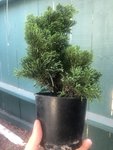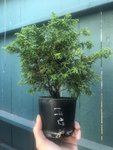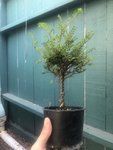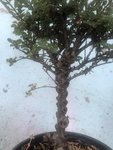Dues12
Seedling
Hello! New to bonsai and trying to do my own research, but have been unable to locate anything specific to best practices after buying nursery stock, and wanting the tree to sit on my bench and grow out more before I decide on the shape.
I have a couple cypress and an elm.
My main questions are:
Do I put them in a larger pot?
If so, should I trim back the roots at all?
Should I prune/pinch the top and branch ends, to encourage more Inside growth, or leave it be and allow natural growth?
Thank you in advance for any info/tips.
I have a couple cypress and an elm.
My main questions are:
Do I put them in a larger pot?
If so, should I trim back the roots at all?
Should I prune/pinch the top and branch ends, to encourage more Inside growth, or leave it be and allow natural growth?
Thank you in advance for any info/tips.





